These amazing color photographs show the streets of Los Angeles between the 1940s and 1960s. During the early 20th century, Los Angeles continued to boom and by the early 1920s, it had overtaken San Francisco in size.
By 1939 it had a population of over 1.5 million. The Biltmore Hotel was built in 1923. Also in 1923, the famous Hollywood sign was first erected. Hollywood Roosevelt Hotel was built in 1927. City Hall was built in 1928. Union Station was built in 1939.
However, like the rest of the world, Los Angeles suffered during the depression of the 1930s. Between 1935 and 1939 many ‘Okies’ fleeing the dust bowl fled to the Los Angeles region. Los Angeles boomed again during World War II (although its Japanese citizens were interned).
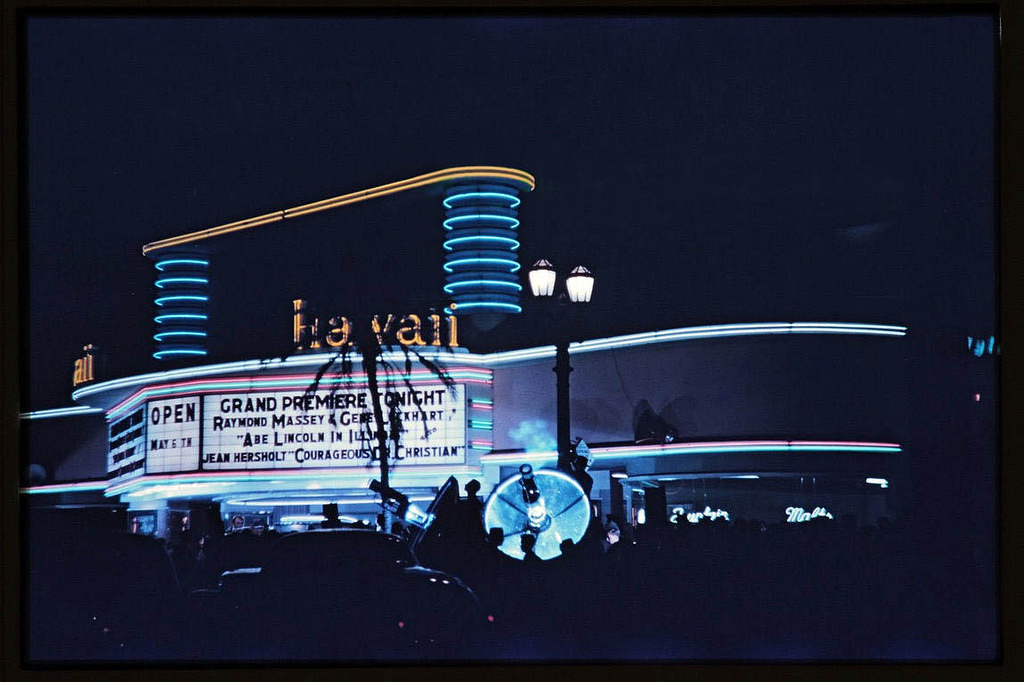
Hawaii Theater, 5941 Hollywood Boulevard, Los Angeles, 1940
After the war, hundreds of land developers bought land cheap, subdivided it, built on it, and got rich. Real-estate development replaced oil and agriculture as Southern California’s principal industry.
In July 1955, Walt Disney opened the world’s first theme park called Disneyland in Anaheim. Nine years later, Universal Studios opened its first theme park with the public studio tour tram at Universal City.
This later touched off a theme park war between Disney and Universal that continue on to the present day. In 1958, Major League Baseball’s Dodgers and Giants left New York City and came to Los Angeles and San Francisco, respectively.
The population of California expanded dramatically, to nearly 20 million by 1970. This was the coming-of-age of the baby boom. By 1950, Los Angeles was an industrial and financial giant created by war production and migration.
Los Angeles assembled more cars than any city other than Detroit, made more tires than any city but Akron, Ohio, made more furniture than Grand Rapids, Michigan, and stitched more clothes than any city except New York.
In addition, it was the national capital for the production of motion pictures, Army and Navy training films, radio programs and, within a few years, television shows.
Construction boomed as tract houses were built in ever expanding suburban communities financed by the GI Bill for veterans and the Federal Housing Administration.

Looking north on Westwood Boulevard from Wilshire, Los Angeles, 1940
Los Angeles continued to spread, particularly with the development of the San Fernando Valley and the building of the freeways launched in the 1940s.
When the local street car system went out of business due to the gas/automobile industry, Los Angeles became a city shaped around the automobile, with all the social, health and political problems that this dependence produces.
The famed urban sprawl of Los Angeles became a notable feature of the town, and the pace of the growth accelerated in the first decades of the 20th century.
The San Fernando Valley, sometimes called “America’s Suburb”, became a favorite site of developers, and the city began growing past its roots downtown toward the ocean and towards the east.
Beginning November 6, 1961, Los Angeles suffered three days of destructive brush fires. The Bel-Air—Brentwood and Santa Ynez fires destroyed 484 expensive homes and 21 other buildings along with 15,810 acres of brush in the Bel-Air, Brentwood, and Topanga Canyon neighborhoods.
Most of the homes destroyed had wooden shake roofs, which not only led to their own loss but also sent firebrands up to three miles (5 km) away. Despite this, few changes were made to the building codes to prevent future losses.
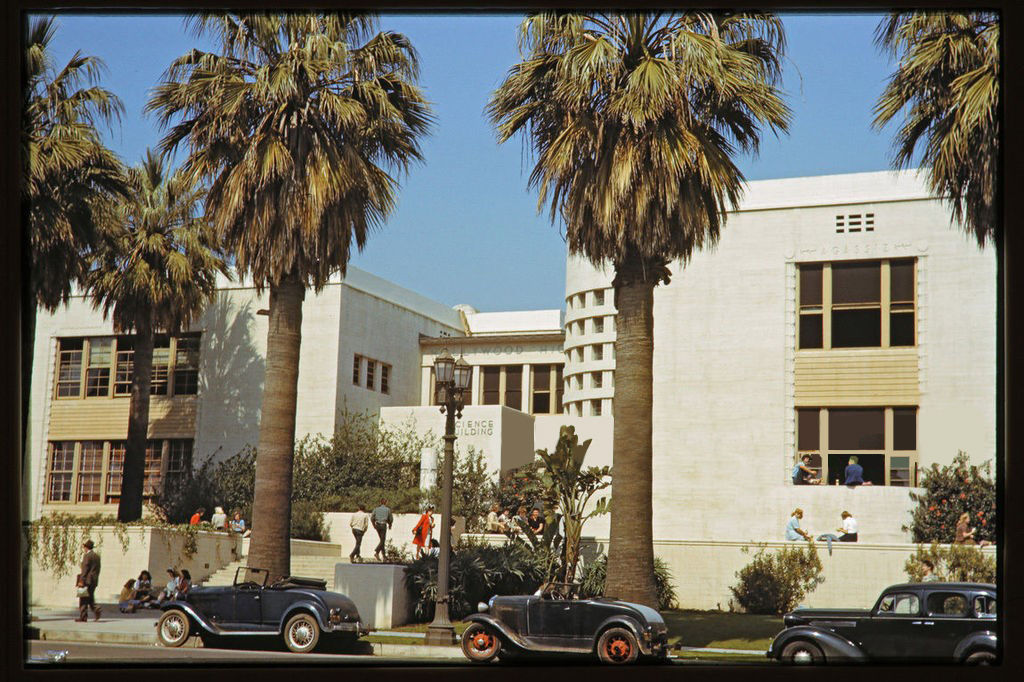
Hollywood High School, Los Angeles, 1941
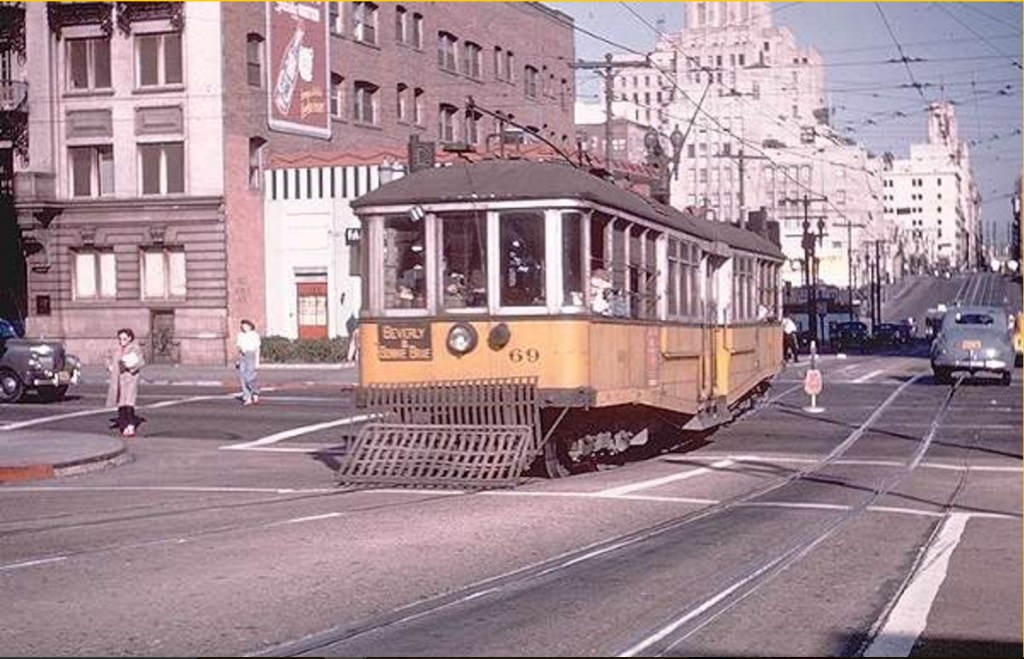
Looking east on 5th Street from Figueroa, Los Angeles, 1941

Looking east on Wilshire Boulevard from Detroit Street, Los Angeles, 1941

Looking north on Westwood Boulevard at Wilshire, Los Angeles, 1941

Looking northeast across the intersection of Wilshire Boulevard and Fairfax Avenue, Los Angeles, 1941

Oil rigs, Signal Hill, Los Angeles, 1941
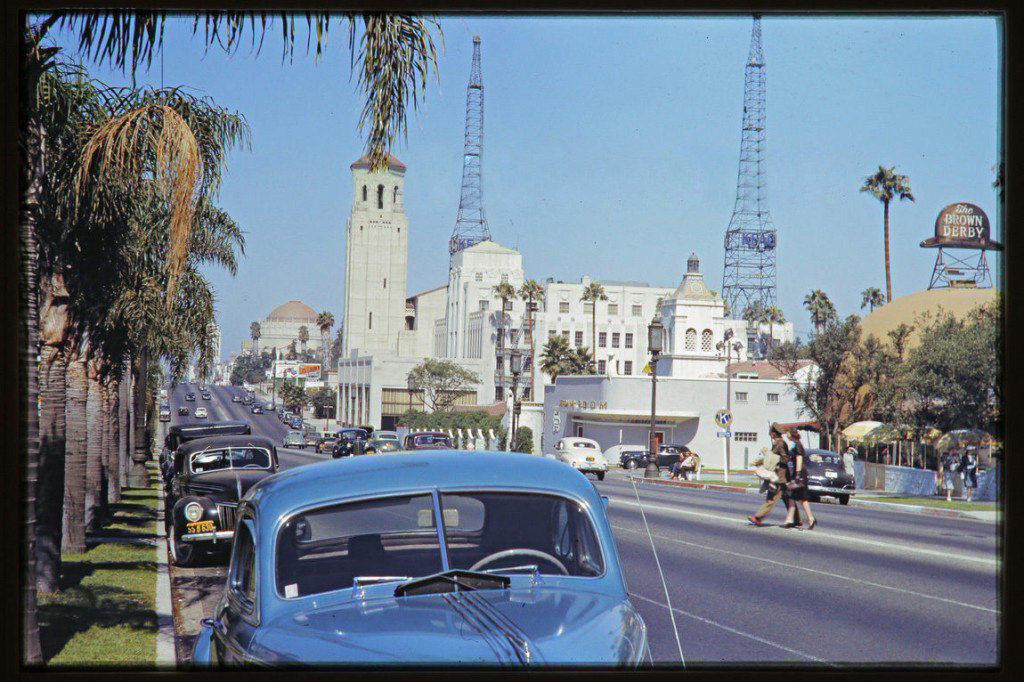
Looking west on Wilshire Boulevard from the Ambassador Hotel, Los Angeles, 1942

Greyhound, 6th and Los Angeles streets, 1943
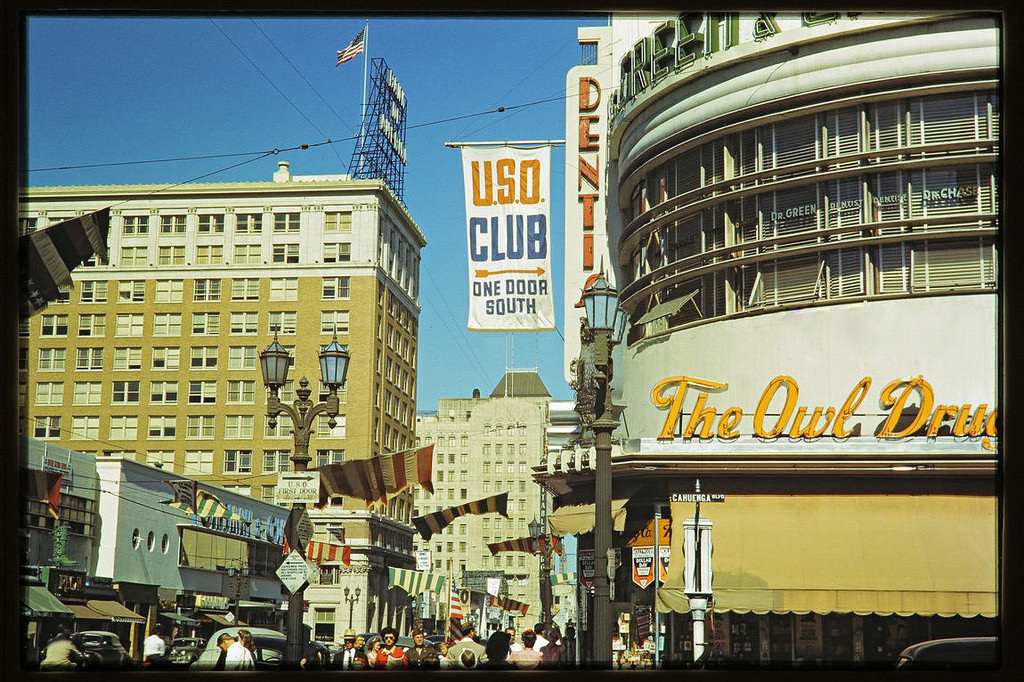
Looking east on Hollywood Boulevard from Cahuenga, Los Angeles, 1943

Looking north on Broadway from just north of 10th Street, Los Angeles, 1947

NBC Radio City, Sunset Boulevard at Vine Street, Los Angeles, 1947

Looking north on Vine Street from NBC Radio City, Los Angeles, 1948
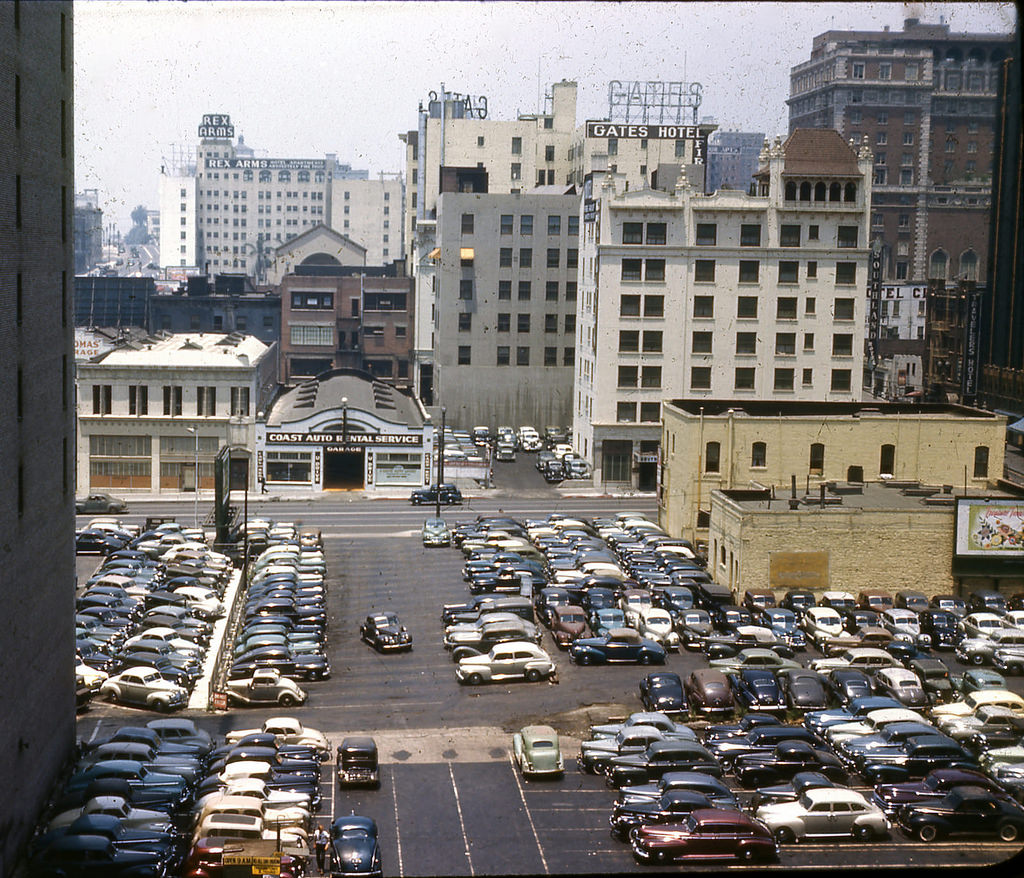
Looking west from Hope Street, Los Angeles, 1948
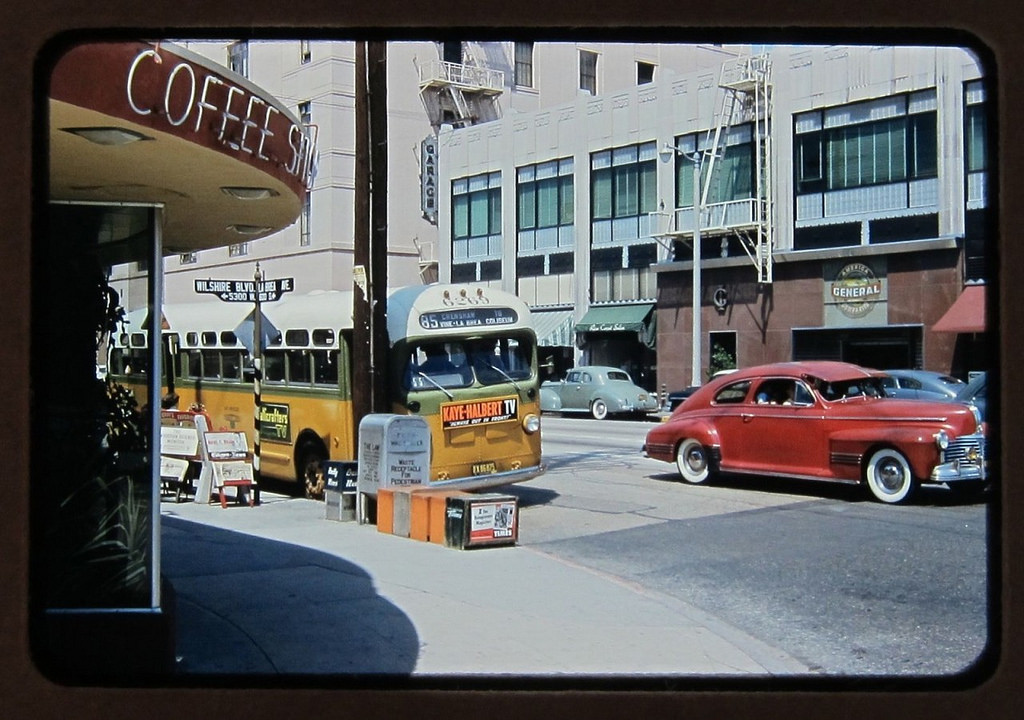
Looking northeast at Wilshire Boulevard and La Brea Avenue, Los Angeles, 1949
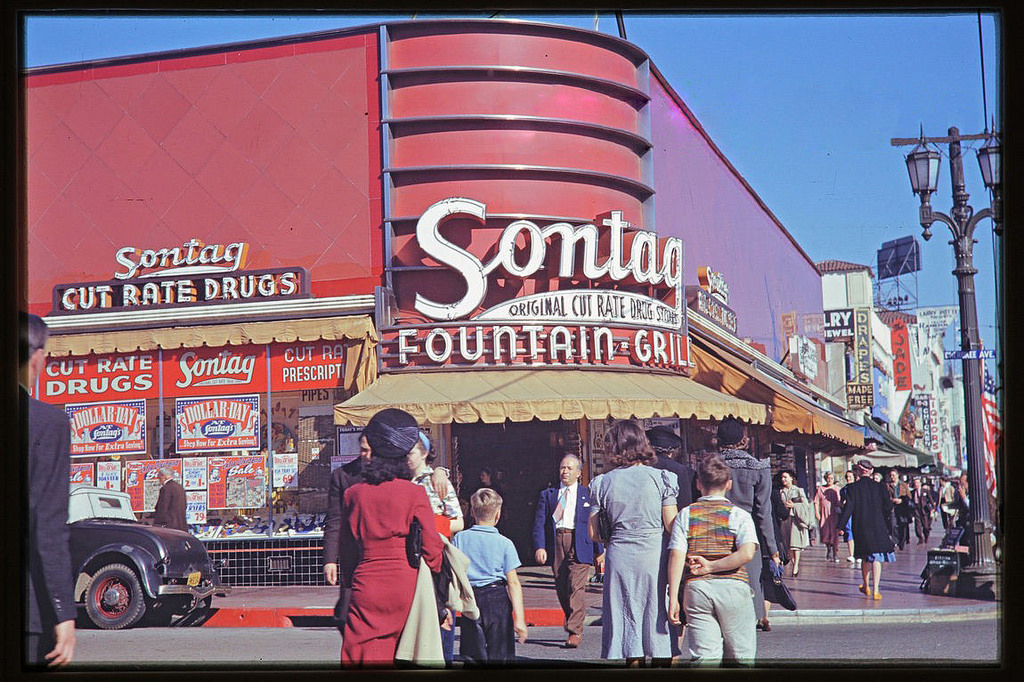
Looking east on Hollywood Boulevard at Cherokee Avenue, Los Angeles, ca. 1940s
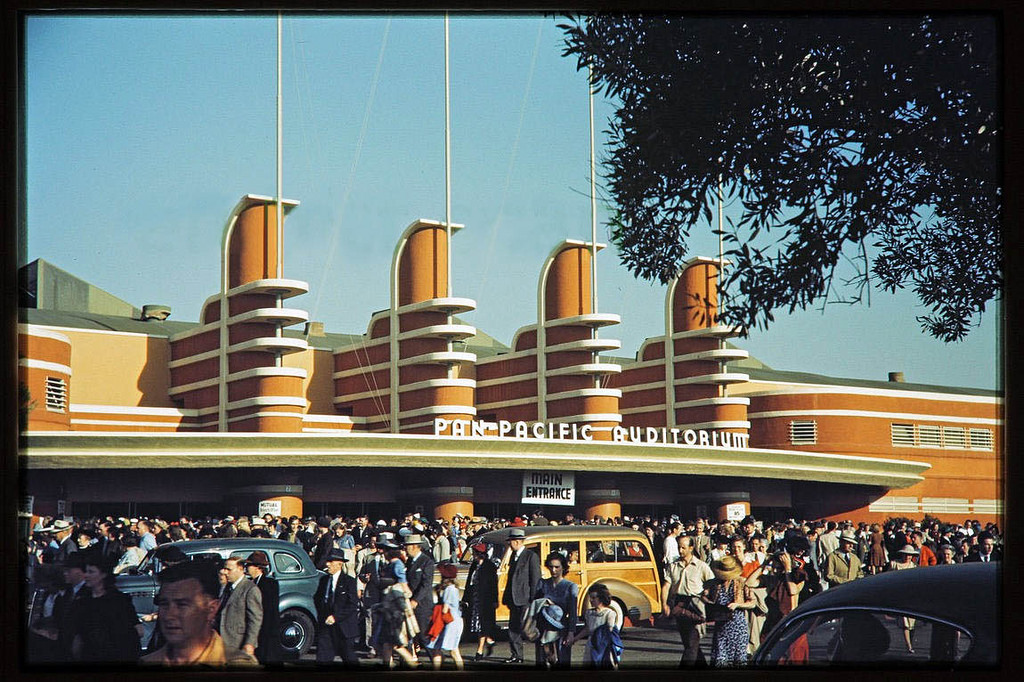
Pan Pacific Auditorium in Los Angeles, ca. 1940s


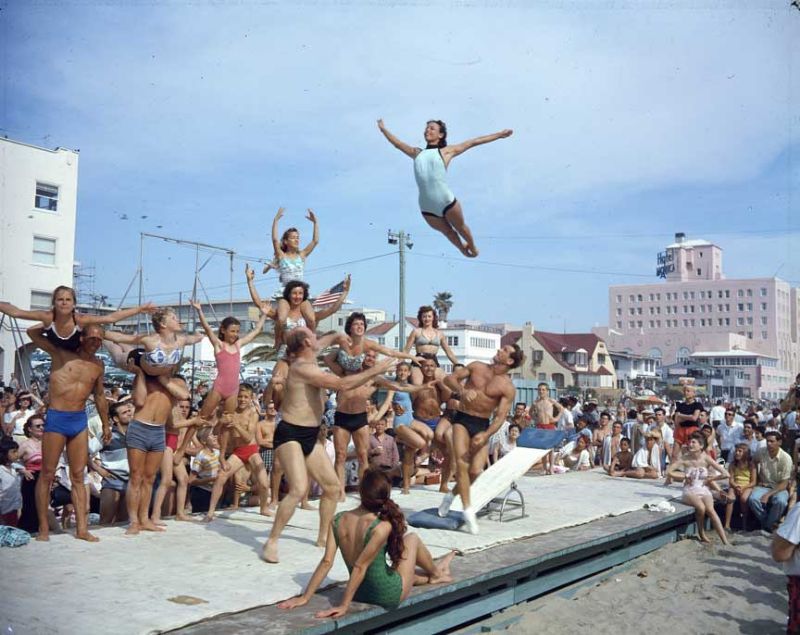





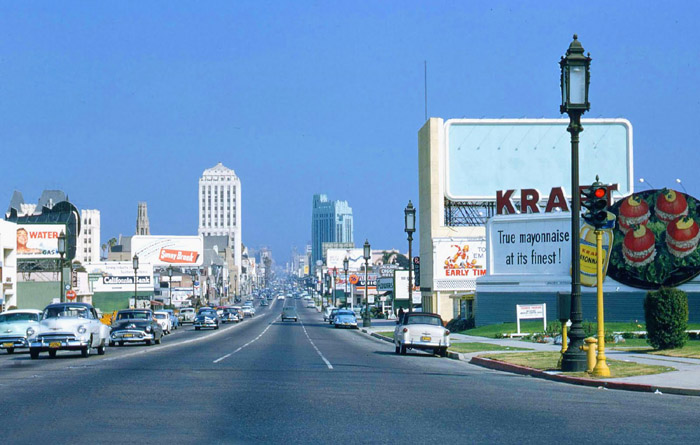


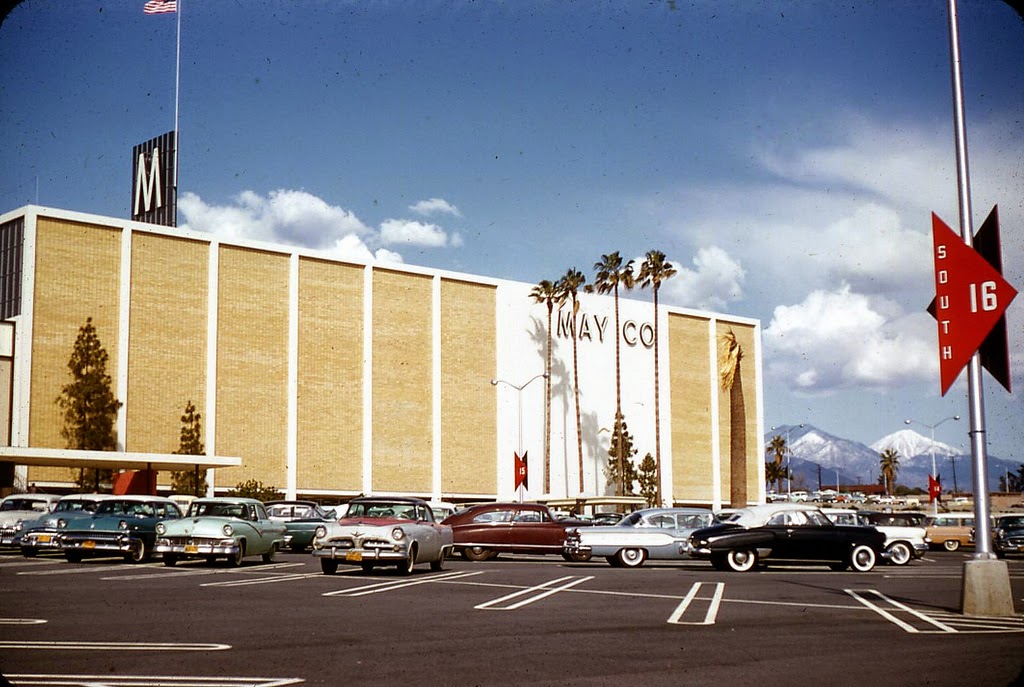





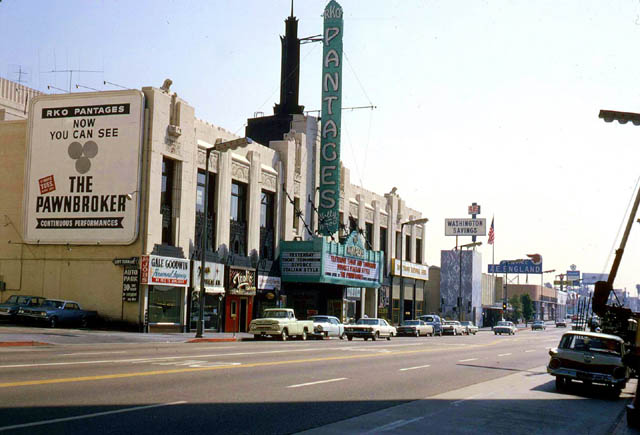





(Photo credit: Pinterest / Flickr / Wikimedia Commons).



